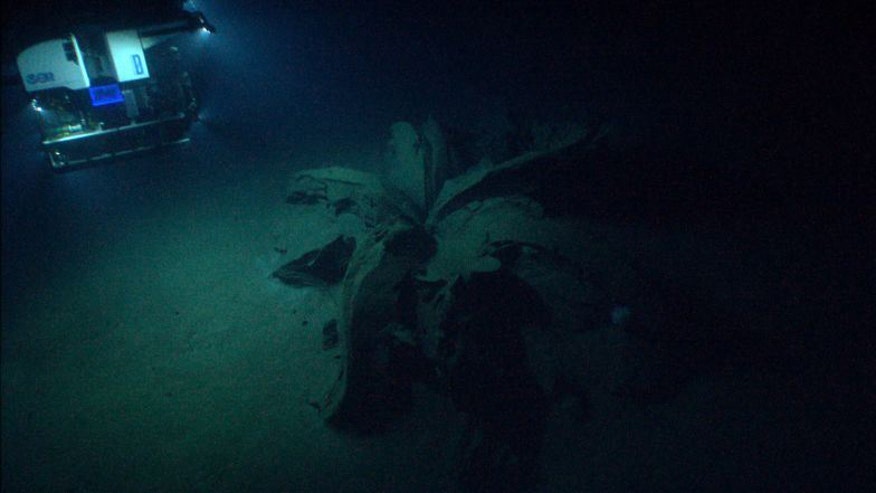| Online: | |
| Visits: | |
| Stories: |

| Story Views | |
| Now: | |
| Last Hour: | |
| Last 24 Hours: | |
| Total: | |
Gulf ‘Shipwreck’ Found Is 2 Ancient Oil Volcanoes Erupting
Scientists searching for shipwrecks in the Gulf of Mexico found two, rare, ancient oil ”tar volcanoes” spouting asphalt.
“It looked like a shipwreck,” said Thomas Heathman, a marine biology student working on the project. “Definitely. And then once we get down there, we see this structure that we’ve never seen before. Never seen anything like it in the northern Gulf of Mexico.”
The formations were the first of their kind to be found in the northern Gulf. They left behind solidified eruptions that scientists nicknamed tar lilies because the eruptions resemble petals.
“It’s kind of like Play-Doh being pushed through a mold,” one researcher explains to the Houston Chronicle. “As [the hot asphalt] came out it hit cold water, probably quite rapidly, and fractured in a way that made it splay onto the sea floor like a flower.”
The substance is believed to be part of an ancient oil deposit.
The 20-foot-wide, 10-foot-high volcanoes, which at first looked like man-made objects on sonar readings, are islands for life in the frigid, deep waters around 175 miles off the coast of Texas.
“The more we look, the more weird features we find, and each of these features is a separate habitat for the creatures that live there,” a marine biologist says.
Archaeologists and marine biologists found the volcano using underwater robots to explore three nearby shipwrecks believed to be pirate ships that sank around 200 years ago, KHOU reports.




